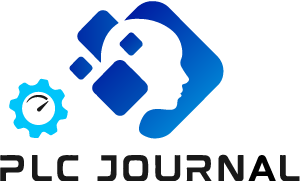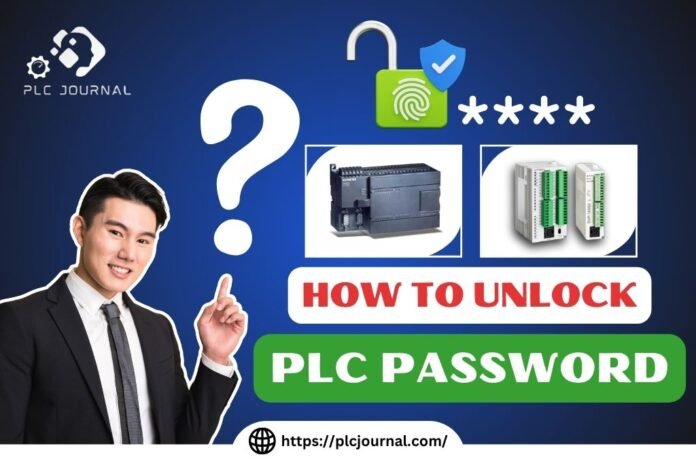Programmable Logic Controllers (PLCs) play a critical role in driving automation within modern industries. They control machinery, processes, and systems in industries ranging from manufacturing to energy production. However, one common challenge faced by engineers, technicians, and maintenance personnel is dealing with locked or forgotten PLC passwords. Whether you’re troubleshooting, upgrading, or recovering a system, knowing how to unlock PLC passwords is an essential skill.
In this comprehensive guide, we’ll walk you through the essential steps to unlock PLC passwords, as well as the tools you’ll need, and, moreover, the best practices to ensure a smooth and efficient process. By the end of this article, you’ll not only have a clear understanding of how to regain access to your PLC systems but also know how to do so safely, without compromising their integrity.
If you want to unlock PLC or HMI password without any hassle, then you can download our PLC HMI unlock software for free.
Besides, you can download PLC software, HMI software, Servo drive software and Inverter software of all brands in the automation world for free.
Then you will get a complete guide on how to do PLC Communication, HMI Communication and PLC to HMI Communication via cable.
Understanding PLC Password Protection
Why Are PLCs Password Protected?
PLCs are often password-protected to prevent unauthorized access, which could lead to accidental or intentional changes in the control logic. This is critical in industrial environments where safety, reliability, and operational efficiency are paramount. Password protection ensures that only authorized personnel can modify the program or configuration.
Types of PLC Password Protection
PLCs may, in fact, have different levels of password protection, including the following options. Moreover, understanding these levels is essential for selecting the appropriate unlocking method, and consequently, ensuring both security and accessibility.
- User-Level Passwords: In particular, these passwords restrict access to specific functions, such as monitoring or editing. Moreover, they provide an added layer of security, thereby ensuring that only authorized personnel can make critical changes.
- Administrator-Level Passwords: Provide full access to the PLC, including program modifications and system settings.
- Firmware Passwords: Protect the PLC’s firmware from being updated or tampered with.
Common Reasons for Needing to Unlock a PLC Password
Forgotten Passwords
One of the most common reasons for needing to unlock a PLC is a forgotten password. This can happen when personnel change or when passwords are not properly documented.
Inherited Systems
When taking over a system from a previous team or vendor, you may not have access to the passwords, necessitating a reset or bypass.
System Upgrades and Modifications
Upgrading or modifying a system may require access to the PLC program, which could be locked behind a password.
Tools and Software for Unlocking PLC Passwords
Manufacturer-Specific Tools
Most PLC manufacturers, in fact, provide proprietary software for programming and configuring their devices. For instance, some notable examples include the following. Moreover, understanding these options is essential for selecting the right software, and consequently, ensuring efficient and reliable device operation.
- Siemens TIA Portal for Siemens PLCs
- Rockwell Automation’s Studio 5000 for Allen-Bradley PLCs
- Schneider Electric’s EcoStruxure for Modicon PLCs
These tools often include features for password recovery or reset.
Third-Party Software Solutions
There are third-party tools designed to unlock or reset PLC passwords. Examples include:
Therefore, be cautious when using third-party tools, because they may not only void warranties but also potentially violate licensing agreements. In addition, consider verifying the credibility of the software beforehand to avoid unexpected issues.
Hardware Tools
In some cases, hardware tools like USB-to-serial converters or specialized cables may be required to connect to the PLC.
Step-by-Step Guide How to Unlocking PLC Passwords
Step 1: Identify the PLC Model and Manufacturer
The first step is to identify the PLC model and manufacturer. This information is usually found on the PLC’s label or documentation. Knowing the model and manufacturer will help you determine the appropriate tools and methods for unlocking the password.
Step 2: Gather Necessary Tools and Documentation
First, collect the necessary software, hardware, and documentation. This may include, for example, manuals, drivers, and installation files. Additionally, ensure that all components are compatible and up to date before proceeding.
- Programming software (manufacturer-specific or third-party)
- Communication cables
- User manuals or technical documentation
Step 3: Attempt Default Passwords
Many PLCs come with default passwords, such as “admin” or “1234.” Check the manufacturer’s documentation for default credentials. If the password has not been changed, this may grant you access.
Step 4: Use Manufacturer Software to Reset or Bypass Passwords
Most manufacturer software includes options for password recovery or reset. For example:
- In Siemens TIA Portal, you can use the “Reset to Factory Settings” option.
- In Rockwell Studio 5000, you can use the “Password Recovery Tool.”
Follow the software’s instructions to reset or bypass the password.
Step 5: Contact the Manufacturer or Vendor
If, despite your efforts, you’re unable to unlock the password using software tools, then promptly contact the manufacturer or vendor. Furthermore, they may provide a master password, or alternatively, guide you step by step through the recovery process
Step 6: Use Third-Party Tools (If Necessary)
If manufacturer tools are unavailable or ineffective, consider using third-party software. Ensure that the tool is reputable and compatible with your PLC model.
Step 7: Reset the PLC to Factory Settings
As a last resort, you can reset the PLC to its factory settings. This will erase all programs and configurations, so use this option only if you have a backup of the PLC program.
Best Practices for How to Unlocking PLC Passwords
Always Backup Data
Before attempting to unlock a PLC, be sure to back up all data and programs. In addition, this precaution ensures that you can quickly restore the system if anything goes wrong. Moreover, taking this step minimizes potential risks and helps maintain the integrity of your PLC system.
Document the Process
Keep a detailed record of the steps you take, including any passwords or settings you change. Moreover, this documentation will serve as a useful resource for future reference. In addition, maintaining thorough records helps prevent errors and ensures a smoother process if similar tasks need to be performed again.
Ensure Compliance with Company Policies
Make sure, therefore, that your actions fully comply with company policies as well as legal requirements. Moreover, unauthorized access to PLCs can lead to serious consequences. In addition, adhering to these guidelines helps protect both your organization and yourself from potential risks.
Avoid Unauthorized Access
Only unlock PLC passwords if you have the proper authorization. Otherwise, gaining unauthorized access may, in fact, result in both legal and ethical complications. Moreover, adhering to proper protocols not only ensures compliance but also helps maintain professional integrity.
Risks and Ethical Considerations
Legal Implications
Unlocking a PLC password without proper authorization may violate laws or regulations. Always ensure you have the right to access the system.
Security Risks
Bypassing password protection can expose the system to security risks. Ensure that the system is properly secured after unlocking.
Ethical Use of Password Unlocking Techniques
Use password unlocking techniques responsibly. Avoid using these skills for malicious purposes.
Importance of PLC Password Protection
As PLCs control critical industrial operations, protecting their access through password security is paramount. Unauthorized access to a PLC can lead to catastrophic results, including equipment malfunction, production downtime, or even safety hazards for workers. Password protection serves as the first line of defense against cyber threats, ensuring that only authorized personnel can manipulate the system settings and operational parameters. This layer of security not only protects the integrity of the machinery but also safeguards sensitive data that may be stored within the PLC.
In addition to preventing unauthorized access, PLC password protection is, moreover, essential for compliance with industry standards and regulations. For instance, many sectors, such as pharmaceuticals and food manufacturing, require strict adherence to safety and quality control protocols. Consequently, a breach in PLC security could result in non-compliance with these standards, thereby leading to severe financial penalties and reputational damage. Therefore, implementing robust password protection measures is not only a technical requirement but also, as a result, a legal obligation for many organizations.
Furthermore, the importance of PLC password protection extends beyond the immediate security risks. In addition, regularly updating passwords and utilizing complex password policies can effectively deter potential attacks and, as a result, reduce overall vulnerability. Moreover, organizations can cultivate a culture of security awareness among employees, thereby emphasizing the need for constant vigilance when accessing and managing PLC systems. Consequently, this proactive approach not only helps in maintaining operational integrity but also provides protection against the ever-evolving landscape of cyber threats.
Common Methods of Password Protection in PLCs
Various methods are employed to secure PLCs through password protection mechanisms. One of the most common approaches is the utilization of multi-level user access controls. This system categorizes users based on their roles and responsibilities, granting different levels of access to various functions within the PLC. For instance, operators may have limited access to monitor operations, while engineers might have full access to modify programming and settings. This stratification ensures that sensitive areas of the PLC are shielded from unauthorized changes.
Another prevalent method for protecting PLC passwords is the use of encryption. Encrypting the passwords stored within the PLC adds a layer of security, making it significantly more challenging for unauthorized users to decipher them. This technique ensures that even if someone gains access to the PLC’s memory, they would still face obstacles in accessing the actual passwords. Advanced encryption algorithms can be employed, enhancing security further by making brute-force attacks impractical.
In addition to access controls and encryption, organizations often implement password complexity requirements. This means that passwords must meet specific criteria, such as a minimum length, inclusion of uppercase and lowercase letters, numbers, and special characters. By enforcing complex password policies, companies can significantly reduce the likelihood of successful hacking attempts, as simple and easily guessable passwords are eliminated. Regular training and awareness programs can also reinforce the importance of creating strong passwords among employees.
Risks Associated with Unauthorized Access to PLCs
Unauthorized access to PLCs poses substantial risks, which, in turn, can jeopardize both operational efficiency and safety. One of the primary concerns, for instance, is the potential for malicious tampering with control logic. Moreover, an individual with unauthorized access could modify the program controlling machinery, thereby leading to erratic behavior or even complete system failure. Consequently, this can result in physical damage to equipment, costly repairs, and extended production downtime, all of which directly impact the bottom line of the organization.
Moreover, unauthorized access can lead to data breaches, exposing proprietary information and operational secrets. In industries where competitive advantage is vital, losing sensitive data can have far-reaching consequences, including loss of market share and diminished trust from clients and stakeholders. Cybercriminals may exploit vulnerabilities in PLCs to steal intellectual property or gain insights into production processes, further emphasizing the need for stringent password protection.
Another significant risk is the potential for safety hazards. PLCs often control critical systems that ensure the safety of workers and equipment. Unauthorized manipulation can lead to dangerous conditions, such as machinery operating outside safe parameters or emergency shutdown systems being disabled. This not only threatens the safety of personnel on-site but could also lead to catastrophic events, including injuries or fatalities. Therefore, understanding and mitigating the risks associated with unauthorized access is essential for maintaining a safe working environment.
Techniques for Cracking PLC Passwords
While the focus should primarily be on securing PLC passwords, it is essential to understand the techniques that malicious actors might employ to crack these passwords. One common method is brute-force attacks, where an attacker systematically tries every possible combination of characters until the correct password is found. This technique can be time-consuming, especially for long and complex passwords, but with the right tools and enough time, it can be successful. Organizations must recognize this risk and take steps to mitigate it by enforcing password complexity and lockout policies after a certain number of failed attempts.
Another technique involves exploiting vulnerabilities in the PLC firmware or software. Cybercriminals may search for known exploits or weaknesses in the PLC’s operating system to gain access without needing to crack the password directly. This could involve manipulating communication protocols or using malware designed to bypass security measures. Keeping firmware updated and regularly monitoring for vulnerabilities can help organizations stay one step ahead of potential threats.
Social engineering is another tactic that attackers may employ to bypass password protection. This involves manipulating individuals into revealing confidential information, often through phishing emails or phone calls posing as technical support. Attackers may impersonate trusted personnel to trick employees into disclosing passwords or granting access to systems. Training employees to recognize and report suspicious communication is vital in preventing these types of attacks, emphasizing the need for a comprehensive security strategy that encompasses both technical and human factors.
Legal and Ethical Considerations in Password Cracking
Engaging in password cracking raises significant legal and ethical considerations that must be addressed. Unauthorized access to PLCs is illegal in many jurisdictions, and attempting to crack a password without permission can lead to severe legal consequences, including fines and imprisonment. Professionals must understand that ethical hacking, such as penetration testing, should only be conducted with explicit consent from the organization involved. This ensures that all activities are within legal boundaries and protect the rights of individuals and organizations.
Moreover, even within the realm of ethical hacking, there are guidelines and best practices that should be followed. Responsible disclosure policies dictate that if vulnerabilities are discovered, they should be reported to the affected organization immediately without publicizing the issue first. This approach allows the organization to address the problem without causing unnecessary alarm or reputational damage. Ethical hackers must also ensure that their actions do not disrupt operations or compromise safety in any way.
In addition to legal implications, there’s a moral obligation to consider the impact of password cracking on individuals and organizations. Breaching a system can lead to loss of trust and confidence among employees, clients, and stakeholders. Maintaining integrity and professionalism in the field of cybersecurity is essential, as professionals are expected to uphold ethical standards. Engaging in responsible practices not only protects one’s career but also contributes to a safer and more secure digital environment.
Tools and Software for Cracking PLC Passwords
Various tools and software applications are available that can assist in cracking PLC passwords, although their use should always be approached with caution and legality in mind. One popular category of tools is password recovery software, designed to exploit vulnerabilities in PLC systems to recover lost or forgotten passwords. These tools may utilize techniques such as brute force, dictionary attacks, or even advanced algorithms to uncover passwords. While they can be beneficial for legitimate recovery efforts, unauthorized use can result in severe legal repercussions.
Network sniffing tools are another category that can be used to intercept communication between PLCs and other devices. By capturing traffic, attackers may be able to extract passwords transmitted in plaintext or uncover weaknesses in the communication protocols. While such tools can be invaluable for network troubleshooting and security assessments, they can also be misused for malicious purposes, emphasizing the need for robust security measures to protect sensitive data in transit.
Finally, there are specialized software applications designed specifically for PLC programming and security assessment. These tools often come equipped with features that allow users to identify vulnerabilities in PLC systems and test the effectiveness of existing password protections. While they are primarily intended for ethical hacking and security auditing, their capabilities can be misappropriated if used by individuals with malicious intent. Therefore, organizations must ensure that any tools employed in their environment are used responsibly and in alignment with their security policies.
Case Studies of Successful Password Cracking Attempts
Examining case studies of successful password cracking attempts can provide valuable insights into the vulnerabilities that exist within PLC systems. One notable case involved a manufacturing plant where an insider threat exploited weak password policies to gain unauthorized access to the PLC controlling critical machinery. The attacker modified the control logic, resulting in production delays and significant financial losses for the company. This incident highlighted the importance of enforcing strong password requirements and conducting regular audits of access controls.
Another significant case occurred in the oil and gas sector, where hackers gained access to a PLC via an unsecured remote connection. They utilized password cracking tools to bypass authentication measures, ultimately compromising the integrity of the control system. Fortunately, a vigilant IT team detected the intrusion before any catastrophic events occurred, but the incident underscored the need for stringent security protocols, including regular monitoring of network traffic and securing remote access points.
Lastly, a research study revealed vulnerabilities in several popular PLC brands, where default passwords were still in use years after installation. Security researchers demonstrated that they could easily exploit these vulnerabilities to gain full control over the systems. This prompted manufacturers to improve their security offerings, but it also served as a wake-up call for organizations to prioritize changing default passwords and implementing layered security measures to protect against unauthorized access.
Preventive Measures to Secure PLCs from Unauthorized Access
To safeguard PLCs from unauthorized access, organizations must adopt a comprehensive security strategy that encompasses both technical and procedural measures. One of the most effective preventive measures is implementing strong password policies, which include requirements for complexity, length, and regular updates. Organizations should enforce a minimum password age, ensuring that passwords are not easily predictable or reused. Additionally, employing two-factor authentication can provide an extra layer of security, making it significantly more challenging for unauthorized users to gain access.
Regular training and awareness programs for employees are also vital in preventing unauthorized access. Employees should be educated on the importance of password security, the risks associated with social engineering, and the proper procedures for reporting suspicious activity. By fostering a culture of security awareness, organizations can empower their workforce to act as the first line of defense against potential threats.
Periodic security audits and vulnerability assessments can help identify weaknesses within the PLC environment. Organizations should conduct routine assessments of their PLC systems to uncover potential vulnerabilities, ensuring that all software and firmware are up to date with the latest security patches. By maintaining a proactive approach to security, organizations can significantly reduce the risk of unauthorized access and protect their industrial automation systems from potential threats.
Frequently Asked Questions (FAQs) – How to Unlock PLC Passwords
Q1: Can I unlock a PLC password without the manufacturer’s software?
Yes, but it may require third-party tools or hardware modifications. Proceed with caution, as this can void warranties or damage the PLC.
Q2: What should I do if I can’t unlock the PLC password?
Reach out to the manufacturer or a certified service provider for support.
Q3: Is it legal to unlock a PLC password?
It depends on the circumstances. Ensure you have proper authorization before attempting to unlock a PLC.
Conclusion – How to Unlock PLC Passwords
Unlocking a PLC password can be a challenging but necessary task in industrial automation. By following the steps outlined in this guide, you can regain access to your PLC systems while minimizing risks. Always prioritize security, compliance, and ethical considerations when working with PLCs.
Whether you’re dealing with a forgotten password, an inherited system, or a system upgrade, this guide provides the knowledge and tools you need to unlock PLC passwords effectively. Remember to document your process, back up data, and seek professional assistance if needed. With the right approach, you can ensure the continued reliability and efficiency of your industrial systems.
By following this guide, you’ll be well-equipped to handle PLC password challenges with confidence and professionalism. Happy troubleshooting!
For any additional queries or support, please email at picjournalweb@gmail.com. OR WhatsApp-







